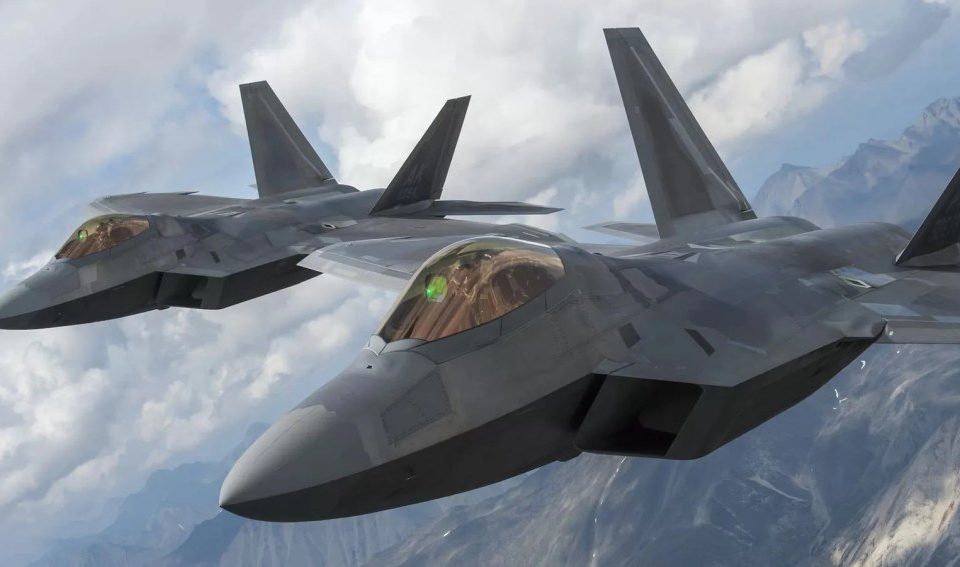
The F-22 Raptor has long been hailed as a symbol of American engineering prowess, reigning supreme in the skies with its sleek and stealthy design. However, a recent breakthrough by Chinese scientists threatens to challenge its dominance.
According to a report by the South China Morning Post (SCMP), a team of Chinese researchers claimed to have pioneered a method capable of substantially amplifying the radar signature of the F-22 60,000 times, potentially rendering it more visible and vulnerable to terrestrial hypersonic missile strikes. This breakthrough poses a direct challenge to the Raptor’s stealth advantage, a cornerstone of its combat efficacy.
Chinese Air Force researchers claim to have made significant breakthroughs in radar technology aimed at enhancing the detection capabilities of stealth aircraft, including the F-22, a cornerstone of the US military’s aerial superiority.
The F-22, championed by the US military as the preeminent fighter jet globally, boasts a radar cross-section (RCS) purportedly as diminutive as 1 square centimeter (0.16 square inches) – akin to the size of a fingernail.
F-22 Fighter Jet’s Radar Signature 60,000 Times with New Detection Method
Led by Xie Junwei, a team from the Air and Missile Defense College of the Air Force Engineering University in Xian, Shaanxi province, said that their innovative approach could amplify the radar visibility of a stealth fighter resembling the F-22 to the extent that it would register on radar screens with a signal strength akin to that of a conventional fighter boasting an RCS exceeding 6 square meters — an exponential increase of 60,000 times.
Xie and his cohort claimed that their breakthrough empowers China’s radar infrastructure to precisely locate the F-22 in real-time, imperiling its efficacy in aerial confrontations and ground bombardments alike.
As detailed in a peer-reviewed paper published in the Journal of Beijing University of Aeronautics and Astronautics on February 26, Xie and his colleagues elaborate that their detection method spans an expansive battlefield encompassing approximately 63,000 square kilometers (24,300 square miles). They claim that regardless of the F-22’s evasive maneuvers, it would remain within the purview of China’s radar network.
These findings hint at the potential ramifications of their research on the F-22’s combat efficacy. Given the F-22’s air-to-air missiles boasting a range of approximately 100 kilometers (62 miles) and its necessity to be within a 20-kilometer radius for smart bomb attacks on ground targets, the aircraft must avert detection or engagement by enemy defense systems before it can reach its operational strike range.
Nonetheless, caution must temper any rush to judgment. While an augmented radar signature might heighten detectability by certain radar systems or at closer ranges, it does not necessarily signify wholesale visibility to all radar modalities. Stealth technology is a labyrinthine realm, and the Raptor may yet elude certain radars despite an expanded signature.
“Detecting stealth targets often requires mobilizing substantial resources within a radar network. However, in real-world combat situations, the number of aerial targets can be huge, and a single radar can only allocate a portion of its resources to detecting and tracking the F-22,” South China Morning Post wrote.
The rivalry between the United States and China in military technology is ceaseless and intense. Both nations relentlessly innovate and hone new technologies in a bid for strategic advantage. While China’s strides in radar detection present a formidable challenge to America’s stealth arsenal, the U.S. remains steadfast in refining its own capabilities in counteraction.
Hence, the full ramifications of these revelations remain elusive absent independent corroboration. Such proclamations frequently surface in Chinese media, complicating assessments of their veracity from external vantage points.
While this news may sow uncertainty regarding the future of the F-22, it also underscores the dynamic evolution of military technology. The Raptor, hailed as an exemplar of engineering prowess, embodies the ingenuity of American designers. Though its reign faces fresh trials, the F-22 will likely endure as a formidable aerial asset for the foreseeable future.
- SEO Powered Content & PR Distribution. Get Amplified Today.
- PlatoData.Network Vertical Generative Ai. Empower Yourself. Access Here.
- PlatoAiStream. Web3 Intelligence. Knowledge Amplified. Access Here.
- PlatoESG. Carbon, CleanTech, Energy, Environment, Solar, Waste Management. Access Here.
- PlatoHealth. Biotech and Clinical Trials Intelligence. Access Here.
- Source: https://techstartups.com/2024/04/18/f-22-stealth-threatened-chinese-scientists-claim-breakthrough-in-detecting-f-22-stealth-jets/



